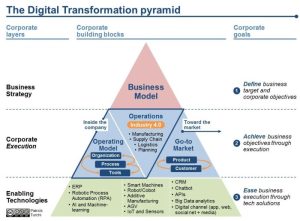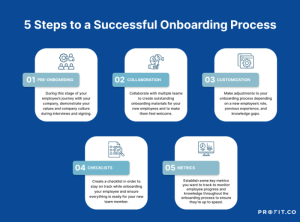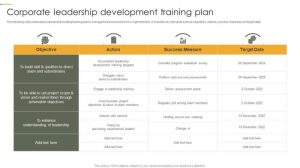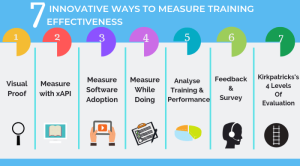
Navigating the path to corporate growth is a complex journey fraught with challenges. From internal inefficiencies and talent shortages to external economic downturns and disruptive technologies, companies face a myriad of obstacles. This exploration delves into the multifaceted nature of these challenges, offering a framework for understanding, categorizing, and ultimately overcoming them to achieve sustainable growth.
We will examine both internal and external factors that hinder expansion, exploring strategies for improving internal processes, managing talent, adapting to economic shifts, and navigating competitive landscapes. The role of strategic planning, resource allocation, and targeted corporate training in fostering growth will be analyzed, culminating in a practical guide for developing and implementing effective growth strategies.
Defining Corporate Growth Challenges
Corporate growth, while a desirable goal for any business, is rarely a smooth, linear process. Numerous internal and external factors can hinder progress, creating significant challenges that require strategic planning and agile adaptation. Understanding these challenges is crucial for effective management and sustainable growth.Companies face a complex interplay of internal and external pressures throughout their lifecycle. These pressures manifest as various challenges that can significantly impact a company’s ability to achieve its growth objectives.
Ignoring these challenges can lead to stagnation or even failure.
Stages of Corporate Growth and Associated Challenges
Different stages of corporate growth present unique sets of challenges. In the early stages, resource constraints and establishing a market presence are primary concerns. As companies mature, they grapple with scaling operations, managing increased complexity, and maintaining innovation. Finally, in the later stages, maintaining market share and adapting to evolving market dynamics become paramount. For example, a startup might struggle with securing funding and building brand awareness, while a large multinational corporation might face challenges related to maintaining employee morale in a sprawling organization and navigating global regulatory landscapes.
Categorizing Corporate Growth Challenges
A framework for categorizing corporate growth challenges can be beneficial for strategic planning and resource allocation. We can categorize these challenges along several key dimensions:
| Category | Description | Examples |
|---|---|---|
| Financial Challenges | Difficulties securing funding, managing cash flow, and achieving profitability. | Securing venture capital, managing debt, navigating economic downturns. |
| Operational Challenges | Issues related to production, supply chain management, and internal processes. | Scaling manufacturing capacity, managing inventory, improving efficiency. |
| Marketing and Sales Challenges | Difficulties reaching target markets, generating leads, and converting sales. | Developing effective marketing campaigns, building brand awareness, managing sales teams. |
| Human Resources Challenges | Issues related to recruitment, retention, training, and employee morale. | Attracting top talent, retaining key employees, managing employee performance. |
| Technological Challenges | Difficulties adapting to technological advancements and integrating new technologies. | Adopting new software, upgrading infrastructure, managing cybersecurity risks. |
| Regulatory and Legal Challenges | Compliance with industry regulations, intellectual property protection, and legal disputes. | Navigating complex regulations, protecting trade secrets, managing litigation. |
| Competitive Challenges | Pressure from competitors, market saturation, and price wars. | Developing a competitive advantage, responding to competitor actions, differentiating products or services. |
Effective management of corporate growth requires a proactive approach to identifying and mitigating these challenges. A well-defined strategy, coupled with agile execution, is essential for sustained success.
Internal Challenges to Growth

Internal obstacles can significantly impede a company’s expansion plans, often stemming from inefficiencies and structural limitations within the organization itself. Addressing these challenges proactively is crucial for sustainable growth. Overcoming these internal hurdles requires a multifaceted approach, encompassing process optimization, structural reform, improved communication, and a robust talent management strategy.Inefficient Processes and Organizational Structures Hindering GrowthInefficient internal processes, such as cumbersome approval workflows, outdated technology, and a lack of standardization, can significantly slow down operations and hinder growth.
For example, a company relying on manual data entry for sales tracking might experience delays in identifying sales trends and responding to market opportunities. Similarly, siloed departments, where information and resources are not readily shared, can create bottlenecks and reduce overall efficiency. Rigid hierarchical organizational structures, characterized by excessive layers of management and limited employee empowerment, can stifle innovation and responsiveness to change.
A classic example is a company with multiple layers of approval required for even minor decisions, leading to slow decision-making and missed opportunities.
Inefficient Processes
Addressing process inefficiencies requires a systematic review and optimization of workflows. This might involve implementing automation tools, streamlining approval processes, and investing in new technologies to improve efficiency. For example, a company could transition from manual data entry to a CRM system, enabling faster data analysis and informed decision-making. Standardizing processes across departments can also reduce redundancy and improve overall efficiency.
Organizational Structures that Hinder Growth
Certain organizational structures can impede growth. Highly centralized structures, where decision-making authority rests solely with top management, can limit employee autonomy and innovation. Conversely, excessively decentralized structures can lead to inconsistencies and a lack of coordination across different departments. A flatter organizational structure, with fewer layers of management and increased employee empowerment, can foster a more agile and responsive organization, better equipped to adapt to changing market conditions.
For instance, a company transitioning from a hierarchical structure to a flatter, more agile one might empower teams to make more independent decisions, leading to quicker responses to market changes and increased innovation.
Improving Internal Communication to Facilitate Growth
Effective internal communication is paramount for organizational growth. Poor communication can lead to misunderstandings, duplicated efforts, and decreased productivity. Implementing strategies to enhance communication, such as regular team meetings, clear communication channels, and the use of collaborative tools, can improve information flow and coordination. For example, the adoption of a company-wide communication platform can ensure timely dissemination of information and facilitate collaboration across different departments and locations.
This fosters a more unified and collaborative work environment, which is crucial for driving growth.
Addressing Talent Acquisition and Retention Challenges
Attracting and retaining top talent is critical for sustained growth. Competitive compensation and benefits packages are essential, but equally important is creating a positive and engaging work environment that fosters employee growth and development. Investing in employee training and development programs, providing opportunities for career advancement, and fostering a culture of recognition and appreciation can improve employee morale and reduce turnover.
For example, a company might implement a mentorship program to support the development of junior employees, or offer tuition reimbursement to encourage further education. A comprehensive talent management strategy, incorporating robust recruitment processes, competitive compensation, and ongoing development opportunities, is vital for building a high-performing workforce capable of driving sustained growth.
External Challenges to Growth
Navigating the business landscape requires understanding and proactively addressing external factors that can significantly impact a company’s growth trajectory. These challenges, unlike internal ones, are often beyond a company’s direct control, demanding adaptability and strategic foresight. This section explores several key external hurdles.
Economic Downturns and Corporate Growth Strategies
Economic downturns present significant obstacles to corporate growth. Reduced consumer spending, decreased investment, and tighter credit markets all combine to create a challenging environment. Companies often respond by implementing cost-cutting measures, focusing on core products and services, and delaying or scaling back expansion plans. For example, during the 2008 financial crisis, many businesses experienced sharp declines in revenue and were forced to lay off employees to maintain profitability.
Successful strategies during such periods often involve strengthening balance sheets, exploring new, recession-resistant markets, and investing in innovation to emerge stronger when the economy recovers.
Regulatory Environments and Corporate Expansion
Different regulatory environments significantly influence a company’s ability to expand. Stricter regulations, such as those related to environmental protection or data privacy, can increase operational costs and limit market access. Conversely, more lenient regulatory frameworks can facilitate quicker expansion and greater market penetration. Consider the contrast between operating in a country with rigorous environmental regulations (requiring significant investment in sustainable practices) and one with lax regulations (allowing for potentially faster but less environmentally responsible growth).
Understanding and adapting to the specific regulatory landscape of each target market is crucial for successful corporate expansion.
Intense Competition in Saturated Markets
Competing in saturated markets presents a unique set of challenges. Established players often control significant market share, making it difficult for new entrants to gain traction. High levels of competition can lead to price wars, reduced profit margins, and the need for substantial marketing investments to differentiate offerings. For instance, the fast-moving consumer goods (FMCG) sector often displays fierce competition, requiring companies to constantly innovate and adapt to maintain market share.
Differentiation through branding, unique product features, or superior customer service becomes paramount in these environments.
Technological Disruptions and Corporate Growth Trajectories
Technological disruptions can fundamentally reshape industries and dramatically impact corporate growth trajectories. The rapid pace of technological advancements necessitates continuous adaptation and innovation to remain competitive. Companies that fail to embrace new technologies risk becoming obsolete, while those that successfully integrate them can gain a significant competitive advantage. The rise of e-commerce, for example, disrupted traditional retail models, forcing many businesses to adapt their strategies or face decline.
Proactive monitoring of technological trends and strategic investment in research and development are essential for navigating this ever-evolving landscape.
SWOT Analysis of External Factors
The following SWOT analysis summarizes the external factors influencing corporate growth:
| Strengths | Weaknesses | Opportunities | Threats |
|---|---|---|---|
| Strong brand reputation | Vulnerability to economic downturns | Expanding into new markets | Intense competition |
| Efficient operations | Dependence on a single supplier | Technological advancements | Regulatory changes |
| Skilled workforce | Limited access to capital | Shifting consumer preferences | Economic recession |
| Innovative products | Outdated technology | Strategic partnerships | Geopolitical instability |
Overcoming Growth Challenges Through Strategic Planning
Strategic planning is the cornerstone of overcoming growth challenges. A well-defined plan allows businesses to proactively address both internal and external obstacles, maximizing opportunities and minimizing risks. It provides a roadmap for resource allocation, ensuring efficient deployment of capital, human resources, and technology towards achieving specific growth objectives. This section will explore the development of such a plan, demonstrate effective resource allocation, showcase successful strategies from leading companies, and provide a step-by-step implementation guide.
Developing a Detailed Strategic Plan
A robust strategic plan begins with a thorough analysis of the current business environment, including internal strengths and weaknesses, and external opportunities and threats (SWOT analysis). This assessment informs the definition of clear, measurable, achievable, relevant, and time-bound (SMART) goals. The plan should Artikel specific strategies for achieving these goals, including marketing and sales initiatives, product development, operational improvements, and financial projections.
Regular monitoring and evaluation are crucial for adapting the plan as circumstances evolve. For instance, a company experiencing supply chain disruptions might adjust its sourcing strategies, while a firm facing increased competition might invest in innovation and differentiation.
Effective Resource Allocation for Growth
Effective resource allocation hinges on prioritizing initiatives aligned with strategic goals. This involves careful analysis of the return on investment (ROI) for different projects and allocating resources accordingly. For example, a company might prioritize investments in research and development if it aims to launch innovative products, or focus on marketing and sales if it aims to expand market share.
This requires a clear understanding of the company’s financial capabilities and a disciplined approach to budgeting and expense management. Lean methodologies and data-driven decision-making are invaluable tools in this process. A company might use a balanced scorecard approach, measuring performance across financial, customer, internal processes, and learning & growth perspectives, to ensure balanced resource allocation.
Examples of Successful Corporate Growth Strategies
Many companies have demonstrated successful corporate growth strategies. Amazon’s relentless focus on customer experience and technological innovation has fueled its exponential growth. Their strategic investment in logistics and cloud computing (AWS) has created new revenue streams and competitive advantages. Similarly, Apple’s focus on design, user-friendliness, and a strong brand image has enabled it to command premium prices and achieve remarkable profitability.
These companies demonstrate the importance of a clear vision, a strong commitment to innovation, and effective execution. Another example is the growth of Netflix, which successfully transitioned from a DVD rental service to a global streaming giant through strategic investments in content creation and technological infrastructure.
Implementing a Robust Corporate Growth Strategy: A Step-by-Step Guide
Implementing a successful corporate growth strategy requires a structured approach. The following steps provide a framework:
- Conduct a thorough SWOT analysis: Identify internal strengths and weaknesses, and external opportunities and threats.
- Define SMART goals: Set specific, measurable, achievable, relevant, and time-bound goals aligned with the overall vision.
- Develop specific strategies: Artikel the actions required to achieve each goal, including marketing, sales, product development, and operational improvements.
- Allocate resources effectively: Prioritize initiatives based on their potential ROI and allocate resources accordingly.
- Implement and monitor: Put the plan into action and regularly monitor progress against goals.
- Adapt and adjust: Be prepared to adapt the plan as circumstances change and new information becomes available.
Following this structured approach enhances the likelihood of achieving sustainable corporate growth. Regular review and adaptation are key to navigating the ever-changing business landscape.
The Role of Corporate Training in Growth
Corporate training is not merely a cost; it’s a strategic investment directly impacting a company’s ability to achieve its growth objectives. A well-designed and implemented training program equips employees with the skills and knowledge necessary to navigate challenges, embrace opportunities, and ultimately drive revenue and market share expansion. Ignoring this crucial element significantly hampers a company’s potential for sustainable growth.Ongoing corporate training programs are vital for supporting corporate growth because they foster a culture of continuous improvement and adaptation.
In today’s rapidly evolving business landscape, companies must remain agile and responsive to change. Training provides the tools and knowledge to adapt to new technologies, market trends, and customer demands, allowing the company to maintain a competitive edge and capitalize on emerging opportunities. Moreover, it increases employee engagement and retention, reducing costly turnover and maintaining institutional knowledge.
Examples of Training Programs Addressing Specific Growth Challenges
Several types of training programs directly address common growth challenges. For instance, if a company is struggling with inefficient processes, a training program focused on Lean Six Sigma methodologies can equip employees with the tools to identify and eliminate waste, streamlining operations and boosting productivity. Similarly, if the company aims to expand into new markets, training on international business practices, cultural sensitivity, and foreign language skills becomes crucial.
Finally, a company facing challenges in digital transformation can benefit from training on data analytics, cloud computing, and cybersecurity. These examples demonstrate how targeted training can directly tackle specific obstacles hindering growth.
A Corporate Training Curriculum Focused on Enhancing Employee Skills Relevant to Growth Initiatives
This curriculum focuses on three key areas: enhancing sales and marketing skills, improving operational efficiency, and fostering innovation.The Sales and Marketing module would include training on digital marketing strategies (, SEM, social media marketing), sales techniques (negotiation, closing deals, customer relationship management), and market research methodologies. This module would utilize a blended learning approach, combining online modules with interactive workshops and real-world case studies.The Operational Efficiency module would focus on process improvement methodologies (Lean, Six Sigma), project management techniques (Agile, Scrum), and data analysis for identifying bottlenecks and areas for improvement.
This module would emphasize hands-on exercises and simulations, allowing employees to apply learned techniques to real-world scenarios.The Innovation module would cover design thinking, creative problem-solving, and idea generation techniques. This module would involve collaborative projects, brainstorming sessions, and exposure to innovative technologies. The curriculum would culminate in a capstone project where employees apply their newly acquired skills to develop a growth strategy for a specific area of the business.
The Correlation Between Employee Engagement Fostered by Training and Corporate Growth
Employee engagement is strongly correlated with corporate growth. Training programs that are well-designed, relevant, and engaging directly contribute to increased employee morale, motivation, and productivity. When employees feel valued and invested in, they are more likely to be committed to the company’s success. This commitment translates into higher performance, improved customer service, and increased innovation, all of which contribute to overall corporate growth.
Conversely, disengaged employees are less productive and more likely to leave the company, leading to increased costs and lost productivity.
Key Performance Indicators (KPIs) to Measure the Effectiveness of Corporate Training Programs in Driving Growth
Measuring the effectiveness of training programs requires a multifaceted approach. Key performance indicators (KPIs) should be chosen strategically to reflect the impact of training on various aspects of the business.
- Increased Sales Revenue: Track the increase in sales revenue attributable to improved sales skills acquired through training.
- Improved Customer Satisfaction Scores: Monitor customer satisfaction ratings to assess the impact of training on customer service quality.
- Reduced Operational Costs: Measure the reduction in operational costs resulting from improved efficiency and process optimization.
- Enhanced Employee Productivity: Track employee productivity metrics (e.g., units produced, tasks completed) to measure the impact of training on individual performance.
- Higher Employee Retention Rates: Monitor employee turnover rates to assess the impact of training on employee satisfaction and retention.
- Increased Innovation Output: Measure the number of new ideas generated and implemented as a result of innovation training.
- Improved Employee Engagement Scores: Use employee surveys to gauge the impact of training on employee engagement and morale.
Measuring and Monitoring Growth
Effective measurement and monitoring are crucial for understanding the success of corporate growth strategies. Without robust tracking mechanisms, it’s impossible to identify what’s working, what’s not, and where adjustments are needed. This section details methods for tracking key performance indicators (KPIs), analyzing data for improvements, and utilizing dashboards for visualizing progress.Tracking key performance indicators (KPIs) provides quantifiable insights into the effectiveness of growth initiatives.
By selecting relevant KPIs and implementing consistent tracking methods, businesses can gain a clear picture of their progress and make data-driven decisions.
Key Performance Indicator (KPI) Tracking Methods
Several methods can be employed to track KPIs relevant to corporate growth. These methods often involve a combination of manual data collection, automated reporting systems, and dedicated analytics software. The choice of method depends on the specific KPIs being tracked, the size and structure of the organization, and the available resources.
- Regular Data Collection: This involves manually collecting data from various sources, such as sales reports, marketing campaigns, and customer feedback surveys. This method is suitable for smaller businesses or for tracking a limited number of KPIs.
- Automated Reporting Systems: These systems automatically collect and aggregate data from various sources, providing regular reports on key metrics. This is more efficient for larger organizations with multiple data streams.
- Dedicated Analytics Software: Software solutions offer advanced analytics capabilities, allowing businesses to analyze data, identify trends, and generate insightful reports. These tools often include dashboards and visualizations for easy interpretation of data.
Data Analysis for Growth Strategy Improvement
Analyzing data from KPI tracking reveals areas for improvement in growth strategies. This involves identifying trends, comparing performance against targets, and investigating any significant deviations. Statistical analysis techniques, such as regression analysis or time series analysis, may be used to uncover deeper insights.For example, if sales growth is consistently below target, analyzing data on marketing campaigns, sales team performance, and customer acquisition costs can pinpoint the bottlenecks.
This analysis could reveal the need for a more targeted marketing strategy, improved sales training, or a reassessment of pricing strategies.
Growth Monitoring Dashboards and Reporting Mechanisms
Dashboards and reporting mechanisms provide a centralized view of key growth metrics, facilitating timely identification of issues and opportunities. These tools often utilize visual representations, such as charts and graphs, to make data easily understandable.The following table illustrates a sample dashboard displaying key growth metrics:
| Metric | Current Value | Target Value | Variance |
|---|---|---|---|
| Revenue Growth (YoY) | 15% | 20% | -5% |
| Customer Acquisition Cost (CAC) | $500 | $400 | +$100 |
| Customer Lifetime Value (CLTV) | $2000 | $2500 | -$500 |
| Market Share | 10% | 12% | -2% |
This dashboard provides a quick overview of the company’s performance against its targets. The negative variances highlight areas requiring attention and potential strategic adjustments. More sophisticated dashboards might incorporate interactive elements, allowing users to drill down into specific data points for more detailed analysis.
CORPORATE GROWTH & CORPORATE TRAINING

Investing in corporate training isn’t just a cost; it’s a strategic investment directly contributing to improved corporate growth. A well-trained workforce is a more productive, innovative, and adaptable workforce, leading to increased efficiency, higher quality output, and ultimately, greater profitability. This synergistic relationship between training and growth is demonstrably impactful across various business sectors.Employee skill development is intrinsically linked to increased revenue generation.
When employees possess the necessary skills and knowledge, they are better equipped to handle their responsibilities effectively, leading to improved performance metrics across the board. This translates to higher productivity, reduced errors, improved customer satisfaction, and ultimately, a direct increase in revenue.
Training Programs Solving Challenges and Fostering Growth
Targeted training programs can directly address specific challenges hindering corporate growth. For example, a company struggling with high employee turnover might implement a leadership training program focusing on employee engagement and retention strategies. This addresses the root cause of the problem, reducing turnover costs and fostering a more stable and productive work environment. Similarly, a company experiencing declining sales might invest in sales training focused on improved communication, negotiation, and closing techniques.
This directly equips sales staff with the tools needed to improve performance and boost revenue. Another example is a company facing challenges with adopting new technology. Providing employees with comprehensive training on the new systems can ensure smooth implementation and minimize disruption to workflows, leading to increased efficiency and productivity.
Case Study: The Impact of Corporate Training on Growth Trajectory
Consider a hypothetical mid-sized software company, “InnovateTech,” experiencing stagnant growth due to a lack of skilled software developers. Their existing team lacked proficiency in the latest programming languages and agile development methodologies. InnovateTech invested heavily in a comprehensive training program, sending employees to external workshops and hiring internal trainers to teach the latest technologies and best practices. The program focused on practical application and hands-on experience.
Within a year, InnovateTech saw a significant increase in the speed of software development, a reduction in bugs, and an overall improvement in the quality of their software products. This led to increased customer satisfaction, positive reviews, and a surge in new clients, resulting in a 25% increase in revenue within two years of implementing the training program. This case demonstrates how a targeted training initiative can directly address specific skill gaps, leading to substantial improvements in efficiency, product quality, and ultimately, corporate growth.
The return on investment (ROI) for InnovateTech’s training program far exceeded the initial expenditure.
Successfully navigating corporate growth requires a proactive and multifaceted approach. By understanding and addressing both internal and external challenges through strategic planning, effective resource allocation, and a commitment to ongoing employee development, companies can position themselves for sustainable and profitable expansion. The journey is demanding, but the rewards – increased market share, enhanced profitability, and strengthened competitive advantage – are well worth the effort.
FAQs
What are some common signs of a company struggling with growth?
Slow or stagnant revenue growth, declining market share, low employee morale, inefficient processes, and difficulty attracting and retaining talent are all potential indicators.
How can a company measure the effectiveness of its growth strategies?
Key Performance Indicators (KPIs) such as revenue growth, market share, customer acquisition cost, and employee retention rates can be tracked and analyzed to assess the effectiveness of growth strategies.
What is the role of innovation in overcoming growth challenges?
Innovation is crucial for adapting to changing market conditions and developing new products and services to meet evolving customer needs. It can help companies overcome challenges posed by competition and technological disruptions.
How important is leadership in driving corporate growth?
Strong leadership is essential for setting a clear vision, fostering a growth-oriented culture, making strategic decisions, and motivating employees to achieve ambitious goals. Effective leadership is a key driver of sustainable growth.





